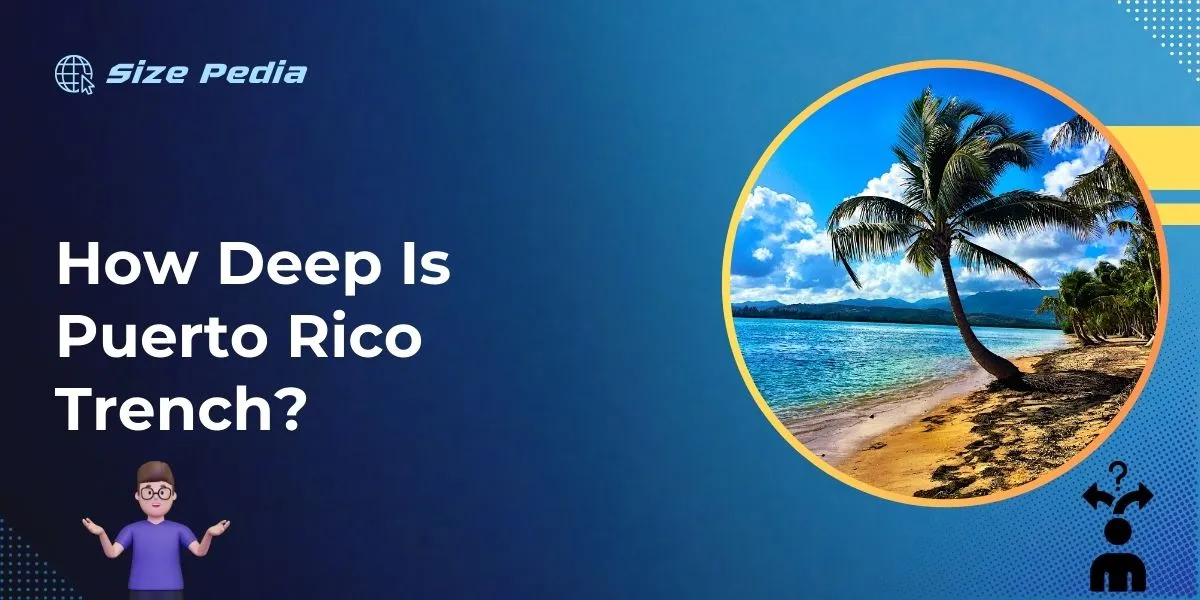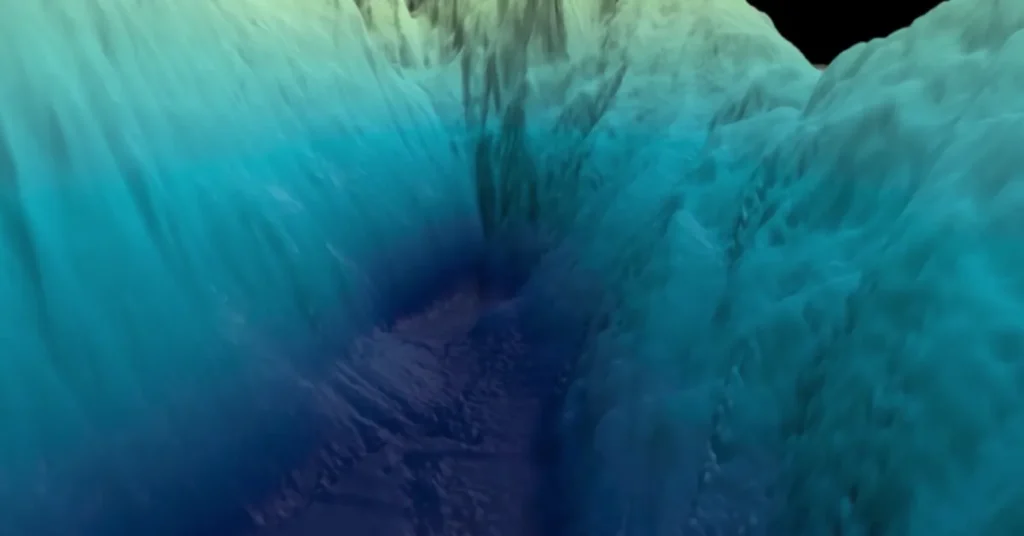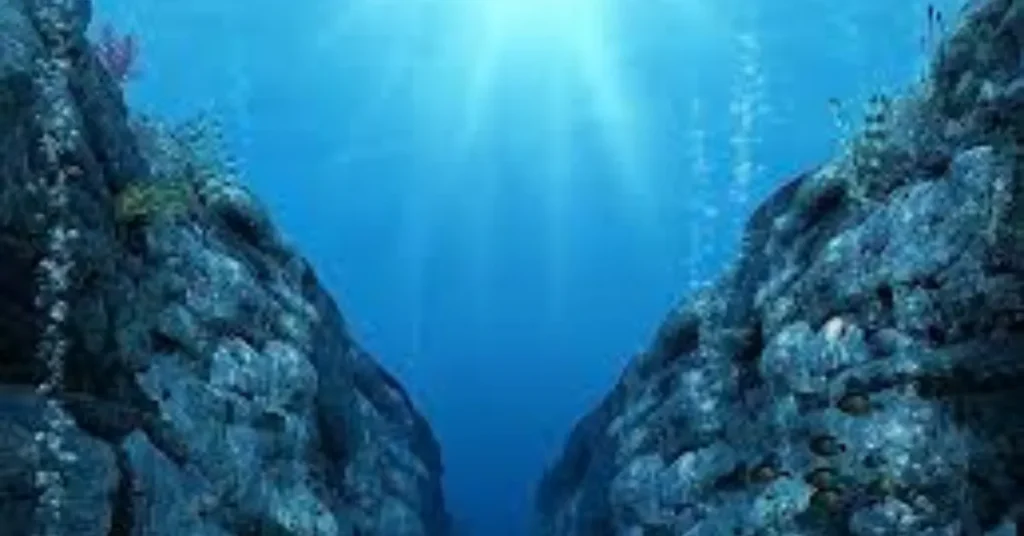The Puerto Rico Trench reaches depths of approximately 27,500 feet (8,229 meters). It is the deepest part of the Atlantic Ocean.
Exploring the realms of our planet’s oceans unveils the majestic Puerto Rico Trench, an underwater marvel located in the western Atlantic Ocean.
This significant geological feature, representing a subduction zone where the North American Plate slides under the Caribbean Plate, echoes with the profound mystery of the natural world.
Along its dark and enigmatic swathes, the trench forms part of a complex boundary between two tectonic plates, which also gives rise to heightened seismic activity in the region.
The depth and structure of the trench attract scientists and oceanographers from across the globe, keen to study the pressures, life forms, and geological processes occurring far beneath the sea’s surface.
As an intriguing aspect of Earth’s topography, the Puerto Rico Trench continues to be a focal point for research and intrigue in marine science and geology.

Plunging Into The Depths: The Puerto Rico Trench
The Puerto Rico Trench is not just another underwater valley. It’s one of the deepest points in the world’s oceans. Marvel at this abyss that plunges depths rivaling Mount Everest. Experience this stunning subaquatic spectacle.
Geographic Marvel Below The Waves
Dive into the heart of the Atlantic Ocean, where the Puerto Rico Trench awaits. Stretching over 800 kilometers, it’s a colossal natural masterpiece.
- Deepest Point: Milwaukee Deep at approximately 8,378 meters.
- Location: North Atlantic Ocean, to the north of Puerto Rico.
- Formation: Result of the oceanic crust of the North American Plate sliding under the Caribbean Plate.
Journey To Earth’s Unseen Crevices
The Puerto Rico Trench captivates scientists and explorers alike. Its depths are home to some of the most unique creatures and geological formations.
Exploring this uncharted territory provides insights about Earth’s past. Few have witnessed its mysteries, where pressure and darkness create an alien landscape.
| Depth | Feature | Significance |
| 8,378 meters | Milwaukee Deep | Deepest point of the trench and the Atlantic Ocean |
| 5,500+ meters | Lower Trench Slope | Region studied for its unique ecosystem |
| Varies | Hadal Zone | Depth zone reserved for the deepest oceanic trenches |
The Depths Charted: Measuring The Mariana Trench
Explorers and scientists have long been captivated by the secrets of the ocean depths. The Mariana Trench stands as the deepest part of the world’s oceans. Accurate measurements unveil the incredible depths of this underwater canyon.
Tools And Techniques For Ocean Mapping
Understanding the depths of the Mariana Trench requires advanced technology. Various tools and techniques play crucial roles in ocean mapping:
- Echo sounding – This technique uses sound waves to measure distance underwater.
- Satellite altimetry – Satellites map the sea floor by measuring variations in sea surface height.
- Submersibles and ROVs – Remotely Operated Vehicles and manned submersibles can explore and map the ocean floor.
- Seismic reflection – This method uses seismic waves to create images of the sea bed.
Record-setting Depths And Discovery
The Mariana Trench holds the record for the deepest point in Earth’s oceans. Known as the Challenger Deep, this point has been the focus of numerous expeditions. Measurements have revealed astonishing depths:
| Year | Expedition | Depth |
| 1960 | Trieste | 10,916 meters |
| 2012 | James Cameron’s Dive | 10,908 meters |
| 2019 | Five Deeps Expedition | 10,927 meters |
Challenger Deep holds the current records, with precise depth measurements provided by each expedition. These explorations not only chart the depths but also uncover new species and geological features.
Secrets Of The Deep: Life In Extreme Environments

The Puerto Rico Trench is not just any deep-sea chasm. It’s a mysterious world. Challenging conditions shape the life that thrives within. The trench’s depth reaches an astounding 8,376 meters at its deepest point.
This makes it the deepest part of the Atlantic Ocean. Creatures adapted to the high pressure and darkness invite curiosity and awe. Let’s dive into the lives that exist in these profound depths.
Adaptations Of Trench-dwelling Creatures
Life in the trench is unlike anywhere else on Earth. Extreme survival skills are a must. Here are some incredible adaptations:
- Bioluminescence: Some creatures produce light to hunt or escape predators.
- Slim bodies: Many fish have streamlined shapes to save energy.
- Specialized diet: Detritivores here consume organic material that falls from above.
The Role Of Pressure, Temperature, And Darkness
Pressure, temperature, and darkness are the ruling forces in the Puerto Rico Trench.
| Factor | Challenge | Adaptation |
| Pressure | Crushing force | Reinforced cell walls |
| Temperature | Near freezing | Antifreeze proteins |
| Darkness | No sunlight | Enhanced senses |
Animals survive here despite the intense conditions. The pressure is hundreds of times greater than at the surface. Temperatures hover around freezing. Near-total darkness envelops the environment. Each creature’s adaptation is a testament to the resilience of life.
The Dark Frontier: Human Expeditions To The Abyss
Exploring the world’s oceans reveals secrets hidden in underwater landscapes. One such enigmatic part is the Puerto Rico Trench. It stands as Earth’s ultimate frontier and tempts the bravest adventurers.
This abyss challenges the limits of human endeavor and technology. Diving into its depths, humans see a world away from the sun’s reach. The adventures to this deep-sea trench feel like visits to another planet. Such missions shed light on Earth’s mysteries.
Submersible Technology And Deep-sea Dives
Delving into the Puerto Rico Trench requires advanced technology. The deepest point, known as the Milwaukee Deep, lies over eight kilometers below the ocean’s surface. Submersible vessels enable this journey.
These engineering marvels combat tremendous pressure. Explorers trust them with their lives in the hostile environment. State-of-the-art submersibles use materials like titanium.
They have robotic arms for collecting samples. Their powerful lights unveil the trench’s darkest corners. Scientists deploy these vessels to uncover new species and geological insights.
- Unmanned submersibles: Operated remotely, they send images and data back to the surface.
- Manned submersibles: These carry human occupants to observe the trench firsthand.
- Observational technology: Cameras and sensors on these submersibles allow detailed study.
Historic Missions And Modern Challenges
The journey to the Puerto Rico Trench’s depths has a storied history. The descent started with the Trieste in 1960. This mission set the stage for future deep-sea exploration.
Jacques Piccard and Don Walsh pioneered the Trieste’s dive. Their expedition reached the Challenger Deep, the Mariana Trench’s lowest point. The Trieste’s success inspired continued exploration.
Today, explorers face modern challenges. The trench’s depth and pressure demand top-notch technology.
Missions seek to document and understand life in extreme conditions. They also gauge the trench’s impact on tsunamis and earthquakes. Safety and conservation issues also guide these modern explorers.
| Mission Name | Depth Reached | Year |
| Trieste | Challenger Deep | 1960 |
| Deepsea Challenger | Challenger Deep | 2012 |
Conservation And Concerns: Protecting The Ocean’s Depths

The Puerto Rico Trench is not just another submarine landscape. It is the deepest part of the Atlantic Ocean. It descends to more than 27,000 feet.
That’s over five miles of unexplored habitats and mysterious oceanic creatures. With such vast depths come great responsibilities.
The necessity to safeguard this abyssal treasure is imperative. Risks from human activities loom over its fragile ecosystem. This section dives into the urgent need to protect the trench’s deep-sea environment.
Environmental Threats To The Trench Ecosystem
- Pollution: Plastic waste and chemicals harm marine life.
- Overfishing: It depletes fish populations and disrupts food chains.
- Deep-sea mining: It could destroy habitats before they’re fully understood.
- Climate change: It causes ocean acidification and changes in water temperatures.
International Efforts For Deep-sea Preservation
Various global initiatives strive to conserve ocean depths. They spotlight the Puerto Rico Trench. Key undertakings include:
| Initiative | Mission |
| UN Decade of Ocean Science | Support sustainable management of ocean resources. |
| Deep Sea Conservation Coalition | Advocate for marine biological diversity protection. |
| International Seabed Authority | Regulate deep-seafloor mining and protect the environment. |
Protecting the trench calls for international cooperation and localized efforts. Ongoing research and conservation projects aim to ensure the trench’s survival. They inspire global citizens to become stewards of the deep.
FAQs About How Deep Is Puerto Rico Trench
How Deep Is The Puerto Rico Trench?
The Puerto Rico Trench reaches depths of about 8,376 meters (27,480 feet). It’s the deepest part of the Atlantic Ocean and one of the most profound trenches globally.
Where Is The Puerto Rico Trench Located?
The Puerto Rico Trench is located in the western Atlantic Ocean, just to the north of the island of Puerto Rico. It marks a boundary between the Caribbean Sea and the Atlantic Ocean.
Why Is The Puerto Rico Trench Significant?
The Puerto Rico Trench is significant due to its extreme depth and geologic features. It’s a subduction zone, which makes it a site for earthquakes and helps scientists study tectonic processes.
Can You Visit The Puerto Rico Trench?
Direct visits to the Puerto Rico Trench are not possible due to its extraordinary depth. However, researchers utilize submersibles and remote-operated vehicles to study it.
Conclusion
Delving into the mysteries of the ocean reveals awe-inspiring facts about the Puerto Rico Trench.
With depths exceeding 8 kilometers, it stands as one of Earth’s most impressive undersea features. Its profound abyss, home to unique ecosystems, invites scientists and explorers alike to delve deeper.
Embrace the allure of the ocean’s depths; let the Puerto Rico Trench inspire your sense of wonder.
Resources:
1. https://www.usgs.gov/publications/new-seafloor-map-puerto-rico-trench-helps-assess-earthquake-and-tsunami-hazards
